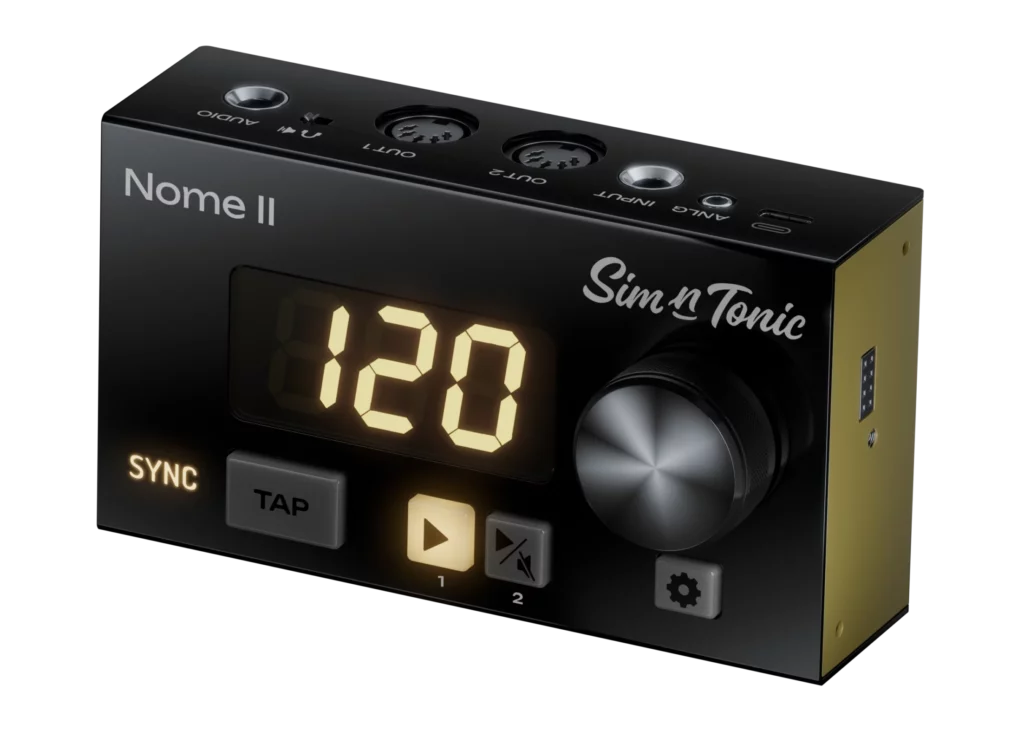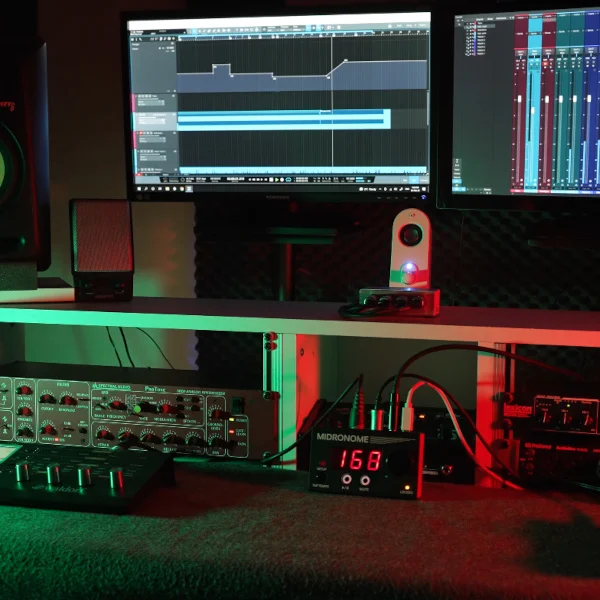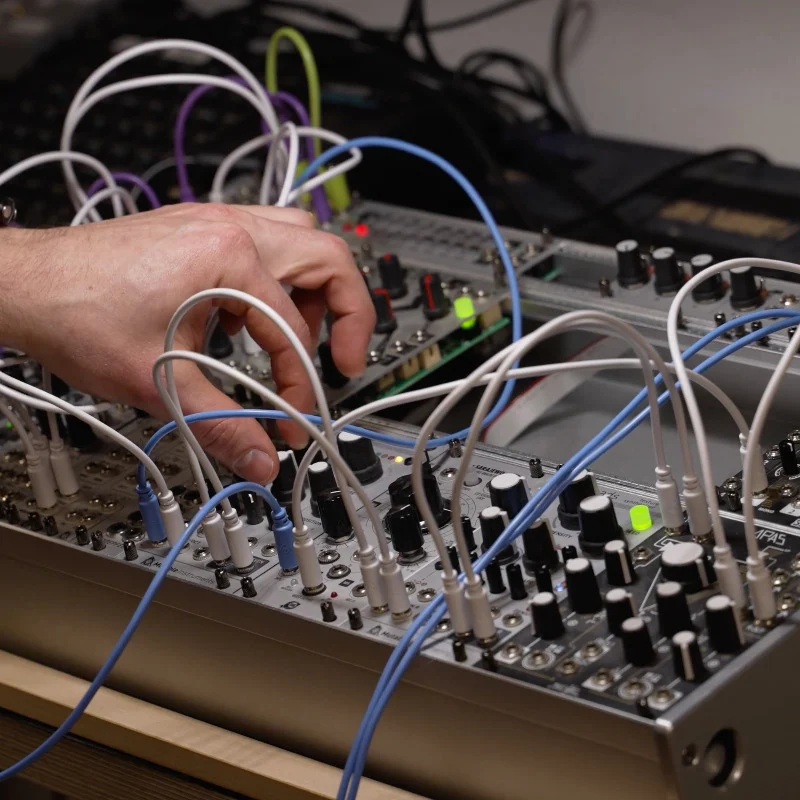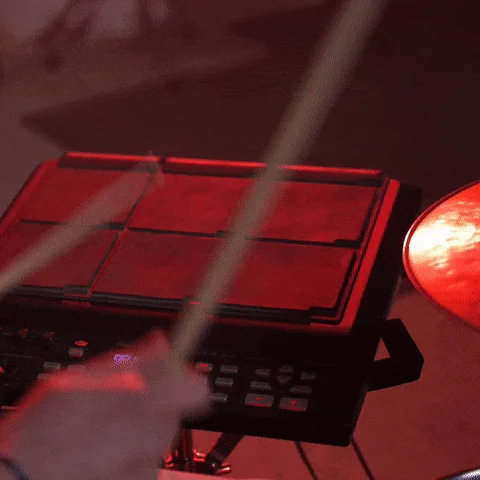Nome II ETA: early November


Sync Nome II to your DAW with a simple USB cable using our first-of-its-kind U-SYNC* technology! By far the easiest way to record your hardware synths perfectly in time in your DAW.
* U-SYNC is Mac-only at the moment, Windows version is in progress. Alternative sync methods and plugins for Windows are available.


The spicy tech details!
| Tempo | 30 to 400 BPM |
| Time Signature | From 1 to 99 beats per bar |
| Outputs | 2x MIDI Outputs – DIN 1x ANLG Clock – 3.5mm stereo TRS 1x AUDIO – 6.35mm stereo TRS |
| Inputs | 1x USB-C plug (power & communication) 1x Multi-function input (6.35mm stereo TRS) |
| MIDI Outputs | No-load voltage 3.3V Follows MIDI Specification Compatible with MIDI-powered devices |
MIDI Messages | Constantly: F8 (MIDI Clock) Start: F2 00 00 (MIDI SPP 0), FA (MIDI Start) Stop: FB (MIDI Stop) followed by Bx 7B 00 (All Notes Off) Resync: FB (MIDI Stop) followed by Start |
MIDI Clock Jitter | < 5 nanoseconds as Master clock Other MIDI messages do not add any jitter |
| USB-MIDI | Class Compliant 3 input interfaces:
3 output interfaces:
|
| USB-MIDI Commands | Change tempo and time signature Mute/unmute metronome Change analog clock speed Start/stop/resync sequencers |
| Forwarded MIDI messages | All except Realtime MIDI Max SysEx data size: 500 bytes |
| CV/Analog clocks | 2 independent outputs (stereo jack) 5ms pulse 0-5V Configurable speed from 1ppq to 24ppq |
| DIN Sync (sync24) | Left = pulses 0-5V 24ppq Right = start/stop signal 0-5V Compatible with vintage devices |
| Metronome sound | 60 different click sounds Different click sound for downbeat |
| Max. Audio Level | Balanced Line Out: +13 dBu Headphones: 15 mW + 15 mW at 32 Ω |
| Audio volume | 9 volume levels +/-6dB steps Different volume for downbeat |
| Possible functions | Pedal/Footswitch Drum Pad External sync (to sync to 24ppq audio pulses) |
| Pedal functions | Mute/Unmute Play/Stop Tap Tempo Max. 2 pedals |
| Drum Pad Modes | Tap Tempo Tap Tempo + Tap Time Signature (detects stronger hits) 3 configurable sensitivity levels |
| Accepted pedal type | Momentary (typical sustain pedal) Latching (typical guitar amp footswitch) |
| Accepted pedal polarity | Any (automatically detected) |
| Mac | Sync using U-SYNC Only USB cable needed Adjustable latency Jitter < 0.3us |
| Windows | Sync using “24P” mode Requires dedicated audio output Adjustable latency Sample rate precision |
| Play/Stop Modes | Play on the next bar Play right away and reset metronome |
| Play Buttons modes | Play on both MIDI Ports Play only on MIDI Port 1 |
| Mute Button Modes | Mute/unmute Second Play button: Play only on MIDI Port 2 (one button per MIDI Port) |
| Power Source | USB Bus Power – 5V |
| Current consumption | 80mA average (default brightness 300) 250mA average (maximum brightness 800) 350mA peak (without add-on module) Asks for 500mA from USB host |
| Dimensions (WxDxH) | 128x76x54mm |
| Weight | 382g |
Early November. Production has already started but delays can happen.
The price is not 100% decided yet, but it is expected to be 249€ / $279 / £219, with free worldwide shipping.
Yes but it’s not easy – see the question above